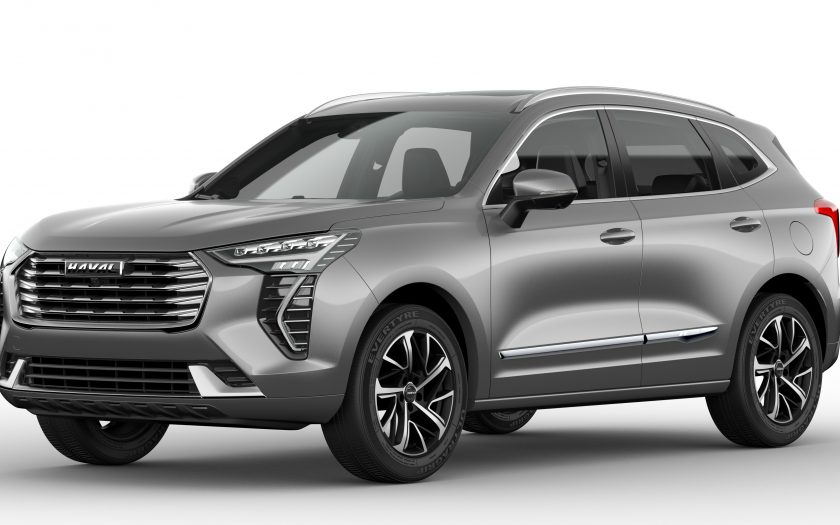Chris Riley tests the 2022 Haval Jolion Ultra with pricing, specs, ride and handling, safety, verdict and everything the over-50 driver needs to know.
Summary: The Jolion has a bit of a split personality – it wears both Haval and GWM badges. But as the smallest and cheapest of the Haval SUVs, it will appeal to a lot of buyers.
2022 Haval Jolion Ultra
Pricing: $33,990 (Ultra), $28,490 (Premium), $30,990 (Lux), $34,485 (Vanta). All prices driveaway.
Metallic paint: $495
Warranty: Seven-years, unlimited km, five years roadside assist, five years capped price servicing.
Safety: Not tested
Engine: 1.5-litre turbocharged four-cylinder petrol
Power: 110kW at 5600-6000rpm
Torque: 220Nm at 2000-4400rpm
Transmission: seven-speed DCT twin clutch auto, front wheel drive
Body: 4472mm (long); 1841mm (wide); 1619mm (high)
Weight: 1345-1370kg
Towing capacity: not stated
Wheels: 18-inch alloy
Tyres: 215/60R17
Ground clearance: 168mm
Turning circle: not stated
Fuel tank capacity: 60 litres
Official consumption: 8.1L/100km (91 RON fuel)
Consumption on test: 7.8L/100 (537km)
seniordriver consumption: not tested
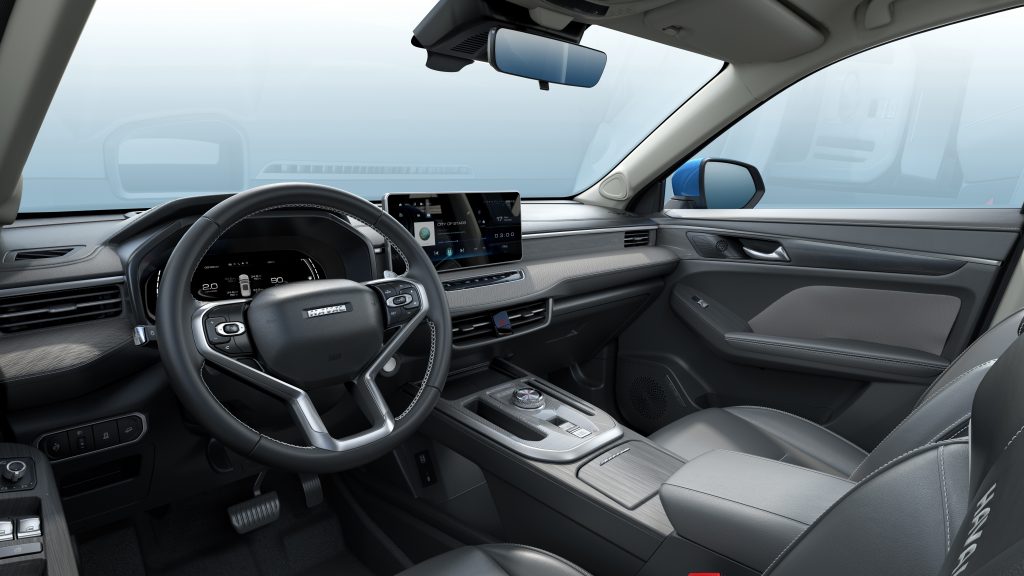
[review]
Haval, aka Great Wall Motors (GWM).
You remember them, the guys that got the tradies all hot and bothered back in 2009 with cheap utes, followed soon after by the X200/X240 SUV based on the same platform.
It was all about the price, but safety soon became an issue and the brand disappeared off the lots for a while it addressed this problem.
A couple of years ago Great Wall Motors became simply GWM, but it’s still a bit confusing because Jolion is a Haval and a GWM at the same time – and it carries both badges.
Whatever. The vehicles now come with a full array of safety equipment, with a range that chops and changes but now includes Jolion, the larger H6 and H6GT (coupe-shaped).
Jolion is the smallest and cheapest of the SUVs.
What’s it cost?
Jolion is priced from $28,490 for the Premium grade, $30,990 for the Lux, $33,990 for the Ultra, and $34,485 for the recently added Vanta with a fashionable black visage.
Metallic paint adds $495 but all prices are driveaway.
Standard kit includes two-zone climate air, PM2.5 air filter, faux leather upholstery, real leather wrapped steering wheel, heated front seats, six-way electrically adjustable driver’s seat four-way adjustable passenger seat.
Jolion Ultra sits on 18-inch alloys, with a panoramic sunroof, LED headlights, DRLs and fog lights, auto-dimming rear view mirror, auto lights and wipers, rear parking sensors plus a 360-degree camera.
Infotainment consists of a big, bright 12.3-inch touchscreen, six-speaker audio with DTS sound processing, Bluetooth, AM/FM radio, Android Auto and Apple Carplay, wireless phone charging, with a front USB port for data and charging and another one in the back for charging only – plus a single 12-volt outlet in the front.
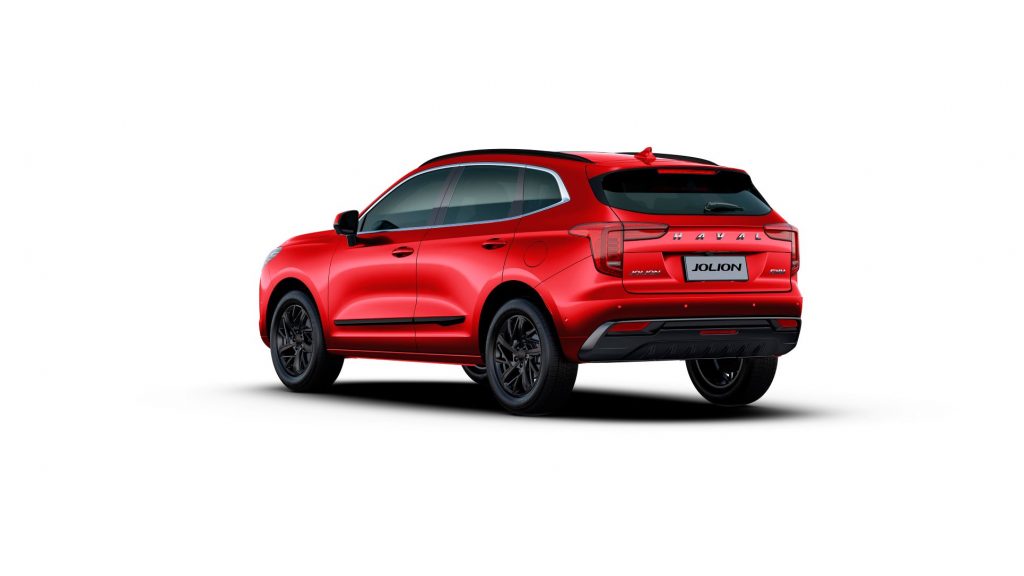
Bearing in mind that Ultra was the top-of-the-line model until Vanta came along, what it doesn’t get is satellite navigation or DAB+ digital radio – two big ticket items in car entertainment these days.
Yes, you can hook up your phone through CarPlay or Android Auto, and use it to provide navigation directions – but try getting it to work when you don’t have access to internet.
Jolion is yet to be tested by the ANCAP organisation, but offers a comprehensive range of safety support systems, including seven airbags, a rear-view camera with guidelines and Autonomous Emergency Braking (AEB) with pedestrian and bicycle detection.
There’s also Heads Up Display, Lane Departure Warning (LDW), Lane Keep Assist (LKA), Adaptive Cruise Control (ACC), Traffic Sign Recognition (TSR), Lane Change Assist with Blind Spot Monitoring (BSM) and Rear Cross Traffic Alert (RCTA).
Of note is the driver fatigue camera that protrudes like an accusing finger from the front, driver-side pillar is quick to tell you when you’re doing the wrong thing.
In fact, you’re likely to get sick of it and go looking for a switch to turn it off. We thought about it.
Jolion is backed by a seven-year unlimited kilometre warranty, five years roadside assist and five years Capped Price Servicing.
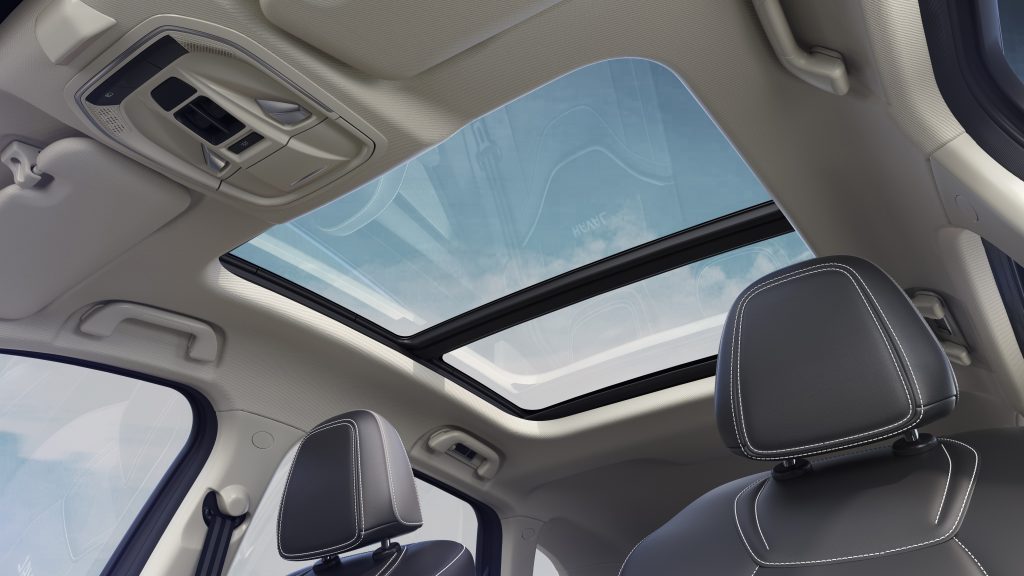
What’s it go like?
Jolion is quite large and comfortable for the price, with heated power adjust front seats, air for back seat passengers and a handy-sized boot, with a space saver spare under the floor.
Take a walk around to the passenger side and you’ll find that the front passenger door lacks the little thumb button to provide keyless entry.
And, BLEEP, the steering wheel does not have telescopic adjustment!
Power is delivered by a 1.5 litre four-cylinder turbocharged petrol engine with outputs of 110kW from 5600 to 6000 revs and 220Nm of torque from 2000 to 4400 revs.
It’s the latter available across a reasonably wide band that gives the car its get up and go.
The engine is mated to a new generation 7-speed DCT transmission (twin clutch auto), with power pushed to the front wheels.
There are four driving modes, Normal, Eco, Sport and Snow, with fuel consumption a claimed 8.1L/100km on the combined cycle from a 60-litre tank.
Built on the company’s new LEMON global lightweight modular platform, Jolion replaces the previous, smaller H2.
It’s 4472mm long, 1841mm wide, and 1619mm high, with a 2700mm wheelbase, with a kerb weight of 1345 to 1370kg, giving it the edge over many competitors.
Compare this to say a Toyota RAV4.
RAV is from 4570 to 4600mm long, 1855mm wide and 1660mm high, with a 2690mm wheelbase.
It weighs between 1530 and 1640kg in non-hybrid form.
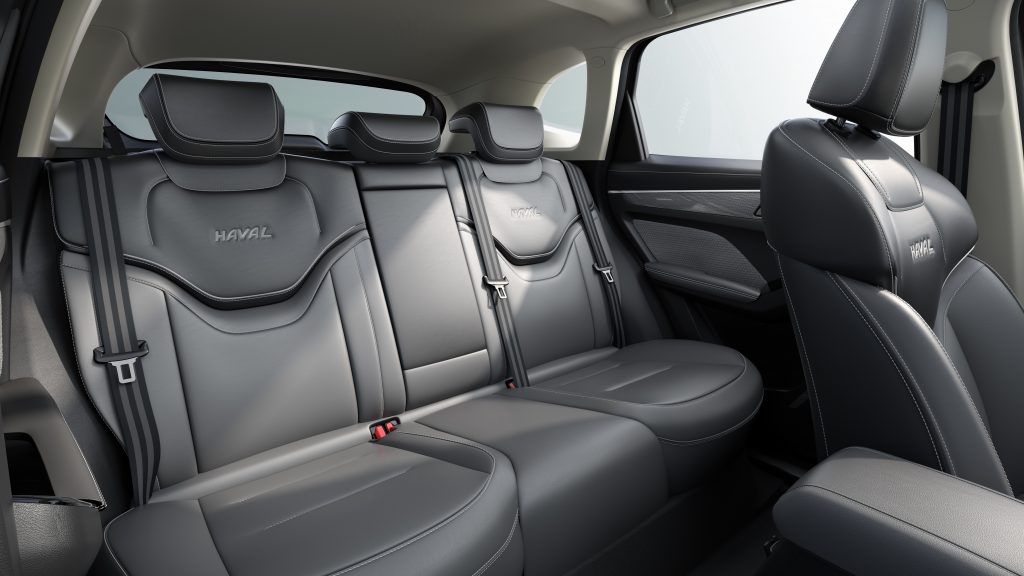
By the way, Jolion means ‘first love’ in Chinese.
The ride feels reasonably comfortable on well-formed surfaces, but can be harsh at other times.
Swap to a Japanese SUV for comparison purposes and you might change your mind, however. Mitsubishi’s Eclipse Cross is a good example, because it has a far more refined ride.
The 1.5-litre turbocharged engine offers a good compromise between performance and fuel economy.
But again, there is an issue with refinement, because throttle response is jerky and sporadic, and can be an issue in low-speed parking manoeuvres.
Like a lot of twin clutch transmissions, it can be slow to hook up.
Changing between forward and reverse with the round gear selector can also be tricky when you’re in a hurry, say if you overshoot a driveway and have to do a short, quick backup.
To switch between drive modes, you need to access the infotainment system.
We tried Sport mode which became intolerable after a while, but it is one of the few cars that we have driven that will stay in the selected mode between starts.
The head-up display is a bonus. So is speed sign recognition.
But the adaptive cruise control system could also do with some refinement, especially when it brakes for no apparent reason, with constant tugging on the wheel even when the indicator has been activated (which should indicate to the system you are changing lanes on purpose).
Then there are the repeated warnings that you’re too close to the vehicle in front. Drop back and someone is sure to cut in.
And what about the “smart dodge function” which steers the car to the right if you’re passing a truck or bus.
WTF?
Accessing the trip computer can be a challenge.
The trick is to hold down the OK button on the right side of the steering wheel and wait for the display to change, which can take several seconds.
After that, you can cycle through the different screens, but it quickly reverts to the standard screen once you’re moving.
The audio is okay, but not quite on par with competitors, even with DTS processing.
We were getting 7.8L/100km after 537km, with another couple of hundred kilometres to go, and it takes standard 91 RON unleaded.
Boot space is a generous 430 litres with the rear seats in place, or 1133L with them folded and the wagon has a 1500kg braked tow capacity.
What we like
- Good size
- Well equipped with some exceptions
- Long list of safety assistance systems
- Plenty of rear legroom
- Zippy performance
- Rear air vents
What we don’t like
- Too many driver warnings
- Brakes for no apparent reason
- Jerky throttle response
- Steering wheel not reach adjustable
- Satellite navigation not built in
- Misses out on DAB digital radio
What over-50s need to know
You’ve probably heard it before, but the Jolion is surprisingly good, offering plenty of car for a bargain price.
Not perfect mind, but they’re getting there – and more quickly than their predecessors such as KIa and Hyundai.
It sits at a good height, has a spacious cabin and is easy to operate, with a turbocharged engine that packs a punch.
Jolion will be a magnet for retired couples and I wouldn’t be surprised to see one sticking out of a garage in every retirement community around Australia before too long.
A friend in this age bracket recently bought one of these cars.
When I pointed out that I didn’t have him pegged as a Haval buyer, he shrugged and said: “I needed a car now. I wasn’t prepared to wait 12 months.”
So, that means everyone else’s loss could be Great Wall’s gain in this crazy, topsy-turvy world in which we now live.
seniordriver comments
Haval is coming on in leaps and bounds, and we’re seeing a lot more of them on the road. We suspect that many are still being bought on price, but progressively, the Jolion is gaining ground on its own merits.
Despite not yet being tested by ANCAP, the suite of safety equipment is impressive and should help some buyers make the decision to go with GWM.
Although Havals are made in China, many buyers still think they’re from India. And we think somebody should point out the inadvisability of calling the global lightweight modular platform a LEMON.
The absence of sat nav or digital radio is a strange omission from what is otherwise a well-equipped vehicle. And for many over-50s, having to get navigation through CarPlay or Android Auto is fiddly and annoying. And since you lose sat nav when you lose internet access, it can be even more frustrating, because that’s precisely when you usually need it!
Because most people rarely get to compare vehicles, the fairly ordinary ride of the Jolion is likely to go unnoticed by most.
We regularly complain about the calibration of driver assist features, and the Jolion’s adaptive control cruise control definitely needs to be addressed. And the “smart dodge function” is downright dangerous.
The Haval Jolion will be more than adequate for the needs of many buyers, so expect to see even more of them on our roads. Especially since, from the experience of Chris’ friend, it appears they have no problem with fairly prompt delivery.
